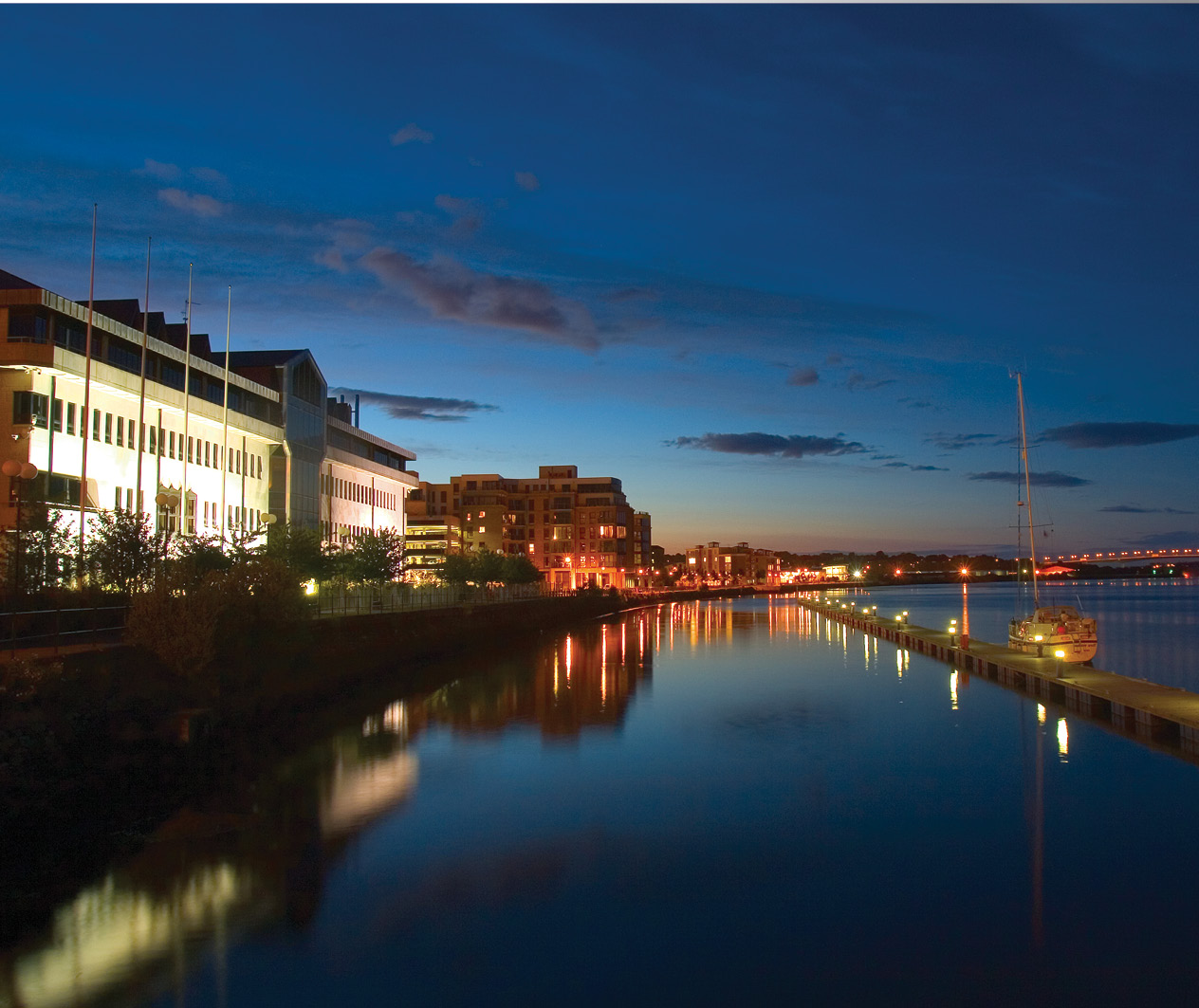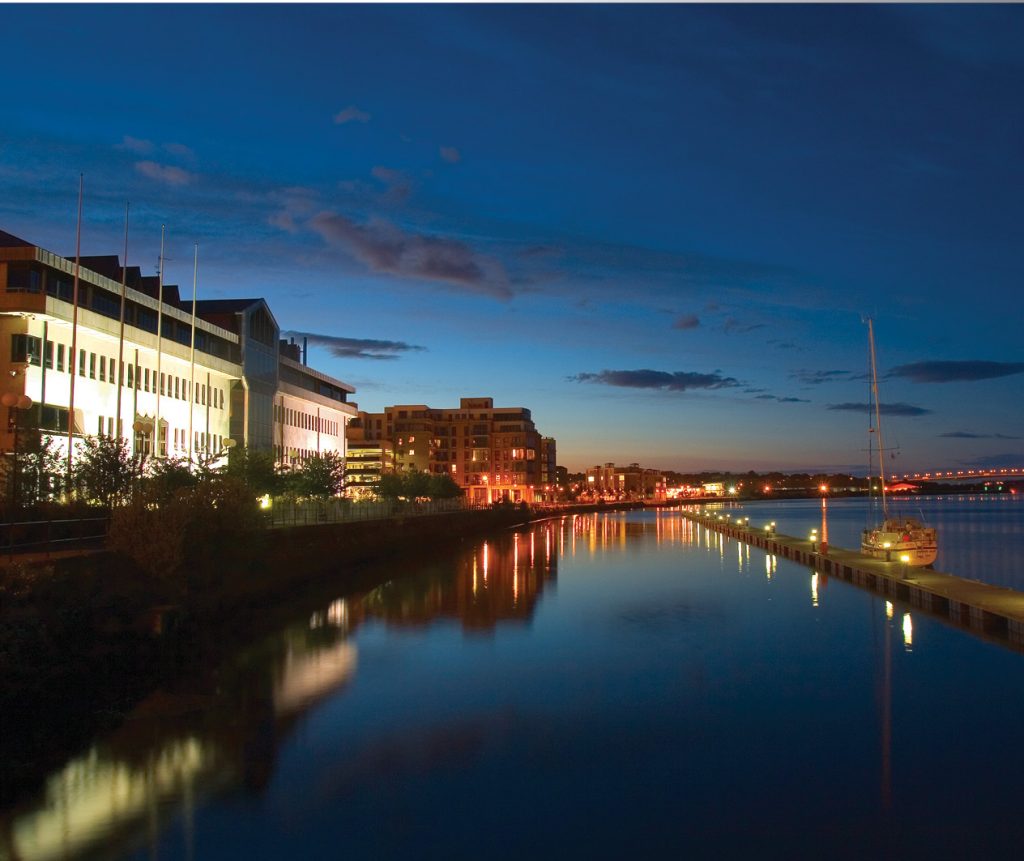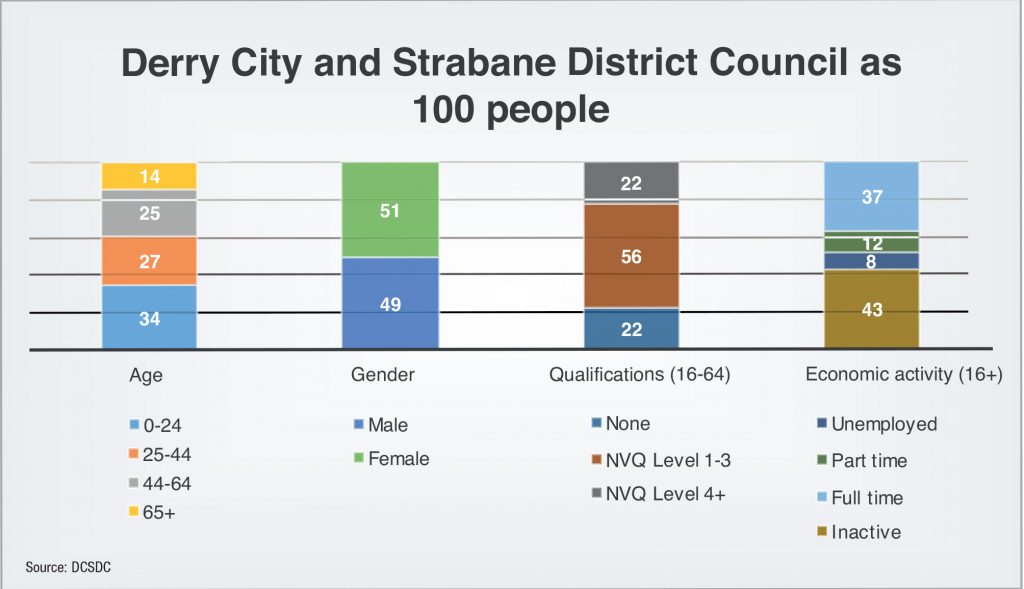North by north west


Despite encompassing Derry, Northern Ireland’s second city, as well as sites of substantial historical and aesthetic significance, the North West region continues to exist in economic isolation. agendaNi provides an overview.
For centuries, Donegal has endured as the natural hinterland of Derry and west Tyrone and vice versa. Indeed, the west bank of the Foyle, upon which much of Derry city now rests, was originally contained within the boundaries of Tír Chonaill (the ancient name for Donegal).
The social, cultural and economic links between the north western counties are inextricable.
Population
With a combined population of 308,228 between Derry City and Strabane District Council (DCSDC) and Donegal County Council (42 per cent under the age of 30), the region has, historically, experienced an infrastructural deficit. Currently, just over one third of the main arterial route between Belfast and Derry is at dual-carriageway or motorway standard. Likewise, there is an infrastructural gap between Derry and Dublin.
Comprising a population of 106,145 within the urban centres of Derry City and Strabane District Council alone (71 per cent of the council district’s population), the North West is the fourth largest city-region on the island of Ireland. However, the region currently faces a raft of imminent and interwoven challenges including Brexit, investment and political will, with an historical disparity in infrastructure at the base.
Overall, of the 11 council areas, DCSDC is ranked as the second most deprived. The district is also ranked highest both in terms of the proportion of people regarded as being in income deprivation and those in employment deprivation.

Cooperation
However, a new project to ensure unprecedented cross-border cooperation aims to drive down the unemployment across the region as a whole. The North West Strategic Partnership is a product of joint work conducted by DCSDC and Donegal County Council (DCC). It is hoped that this new initiative will bring an end to planning duplication across the two council areas.
Through enhanced cooperation, Chief Executive of DCSDC John Kelpie envisions a net contribution to the economies on either side of the border: “In the next ten years, with this approach, with central government on both sides of the border playing a part in our new story; we will see over £3 billion of investment in this region; we will see an additional £500 million of gross value added with these plans; we will see an additional £186 million of salaries in our local community on an annual basis; we will see tax intake increase to £100 million enabling reinvestment to take place and for the first time ever.”
Kelpie’s DCC counterpart Seamus Neely acknowledges the unique identities which are contained within the North West region as a whole, but welcomes the drive to develop a collective message and a singular marketing agenda. Neely outlines: “Collaboration has intensified as the two councils collectively drive the development of the wider North West region. That new level of collaboration comes at a time when local government reforms both north and south have afforded councils much more similar functions and roles than previously, particularly on the economic development side.”
Figures
The latest quarterly figures indicate that, in spite of improvement, the DCSDC region also retains its position as an outlier in relation to unemployment with a total of 5.6 per cent of those of working age in unemployment, compared with a Northern Ireland average of 2.8 per cent. The claimant count average (a measure of persons claiming Jobseeker’s Allowance) in 2015 was 7 per cent for DCSDC, while the average for Northern Ireland was 3.7 per cent. Indeed, the annual figures have been consistently above this since 2005 and long beyond.
The North West has earnings below the average of the 11 districts. Provisional Annual Survey of Hours and Earnings (ASHE) statistics released by DETI for 2016 also suggest that median earnings for DCSDC are £18,014 while across all 11 councils this figure is £20,953. Similarly, mean annual gross pay figures across all the councils was £24,601 while in DCSDC it was £20,904.
Despite encompassing the second largest city in Northern Ireland, DCSDC registered only 4.8 per cent (232,172) of the 4,641,000 overnight trips recorded in 2015. At the same time, however, both Derry’s Walls and The Guildhall feature on the list of Northern Ireland’s top 10 visitor attractions in 2015.
The population of DCSDC is projected to grow to 150,520 by 2023. The Derry City and Strabane Housing Investment Plan 2015-2019 indicates that an estimated 1,795 new-build social housing units will be required, with the areas of greatest need being Westbank, Waterside, Eglinton and Strabane town. However, at the end of Q3 for 2016 the average price for a house in DCSDC was down 9.2 per cent on the previous year. At an average of £99,397, house prices in the North West are the lowest of all 11 council regions and over £50,000 short of the Northern Ireland average (£159,932).





